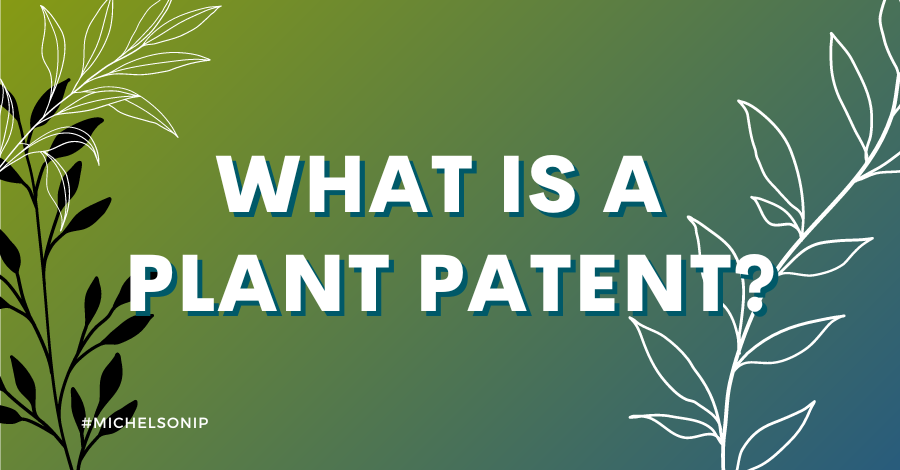Eat More Fruits and Vegetables Day was this Sunday, May 21. But what is the IP behind the seeds and plants of our produce? In this article, we are asked to take a look at: what is a plant patent?
What is a plant patent?
Marilyn Monroe was an icon of the silver screen, and there are many products bearing her image and likeness. In particular, a hybrid tea rose is named in her honor, lovely and peach in color, and blooms in hot weather. The iconic “Some Like It Hot” film should come to mind. This rose was cultivated and invented by Thomas Carruth, and was eligible for intellectual property protection in the form of a plant patent. Yes, new varieties of plants and even seeds can be patented! In this article, we’ll explore what is a plant patent.
Definition of a Plant Patent
As a refresher, the United States Patent and Trademark Office defines a patent as “the grant of a property right to the inventor, issued by the United States Patent and Trademark Office.”
Section 35 of U.S. Code §161 is the provision which provides for the ability to obtain a plant patent, and states “Whoever invents or discovers and asexually reproduces any distinct and new variety of plant, including cultivated sports, mutants, hybrids, and newly found seedlings, other than a tuber propagated plant or a plant found in an uncultivated state, may obtain a patent therefor, subject to the conditions and requirements of this title.”
Similar to other patents, an inventor has rights in his or her plant invention. The new variety cannot be reproduced by others without permission from the inventor, usually found in the form of a licensing agreement. For example, if a rose grower wants to produce the Marilyn Monroe rose, he or she must obtain permission or a license from the inventor.
Components of a Plant Patent
Like other patents, there are several components needed to submit an application:
- Botanical Description: Provide a description that is as complete as possible, and include details on what distinguishes the plant over existing and known plants.
- Title of the Invention: This contains information about the inventor.
- Information on Related Applications: This could be for a utility patent, or related plant patents.
- Statement on any Federally-sponsored research and development.
- The Latin name of the species of plant.
- Variety denomination.
- Background on the Invention: This includes botanical information, how the plant will be used, the parent plant, and other related information.
- Summary of the Invention: A summary of the plant’s characteristics, particularly those which differentiate it from existing plants.
- Description of the Drawing: The drawing should clearly show the distinguishing characteristics of the plant, and the description accompanies it to describe what is being presented.
- Detailed Botanical Description: This is a thorough description of the claimed plant.
- Claim: It is a single sentence about the claim being made on the plant.
- Abstract: Another description of the plant, but this one is a bit more condensed.
A complete summary of requirements can be found here.
Current Issues With Seed Patents
There are some concerns regarding plant patents, particularly those which focus on seeds. Organizations such as SWISSAID have called for a ban on these types of patents and cite several reasons for their concern. First, these patents have criticized for leading to higher prices for farmers, and less choices for consumers, resulting in a negative impact on biodiversity. Second, currently many of the patents relating to seeds are owned by large corporations, and “little guy” farmers are driven out of the market because they are not able to compete and pay for the seeds needed to farm. Third, critics point out that this all stifles innovation – they claim that if the seeds were not patented, there could be even more creation and variation for consumers and farmers, at lower prices.
Is There a Middle Ground?
Big corporations have money which translates to a larger research budget, and as result leads to increased creation and variations, as well as growth in biotechnology jobs. Although these companies are making big profits, they are also making big strides in R&D. There is possibility for middle ground between the anti-plant patent crowd and the IP side, particularly in regards to farmers. Larger companies could reduce licensing fees on their seeds, so the small, family operated farms can still operate and make a profit. Policy wise, expanding farmers’ rights under the Plant Variety Protection Act (PVPA), so that all parties can better serve the public is also an avenue to consider. It might be a bit of an optimistic approach, but one hopes resolving world food insecurity and increased biodiversity are among the goals for these corporations.
Another potential solution is expanding and investing in the Open-Source Seed Initiative (OSSI). This is similar to other open-source intellectual property initiatives in that the seeds available do not have patent protection, and are free to use for all.
There is no one answer to this question, but as the world continues on towards the middle of the 21st century, there is no doubt we will see an increase in patents on living things. We must remain hopeful that these advancements will improve life for all.
Further Reading & Information
_________
 The Michelson Institute for Intellectual Property, an initiative of the Michelson 20MM Foundation, provides access to empowering IP education for budding inventors and entrepreneurs. Michelson 20MM was founded thanks to the generous support of renowned spinal surgeon Dr. Gary K. Michelson and Alya Michelson. To learn more, visit 20mm.org.
The Michelson Institute for Intellectual Property, an initiative of the Michelson 20MM Foundation, provides access to empowering IP education for budding inventors and entrepreneurs. Michelson 20MM was founded thanks to the generous support of renowned spinal surgeon Dr. Gary K. Michelson and Alya Michelson. To learn more, visit 20mm.org.
